What Do the Terms "Wild Salmon" and "Farmed Salmon" Mean?
As longtime seafood consumers know, not all salmon is created equal - and not all seafood is quality seafood. (To learn more about how to find quality seafood, read our last blog here.)
As you might have guessed, only wild salmon are caught in the pristine waters of oceans and rivers, depending on the region and time of year. In this natural environment, the fish swim as far as they’d like and live an overall healthier life before being caught on a hook or in a net.
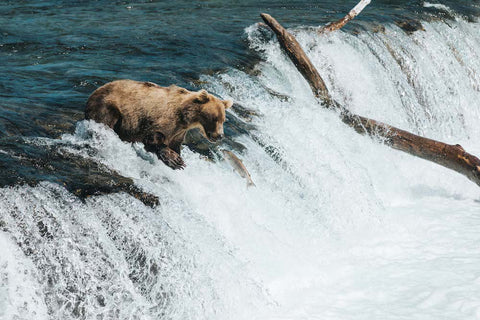
Fun Fact: Wild Salmon are “Anadromous”
Wild salmon are anadromous. At the end of their life cycle they return to the area where their eggs were first hatched - after spending two to three years in the ocean preparing for the long journey home. This natural, amazing phenomenon is part of what makes wild fish so delicious and healthy; they eat mightily on this journey, building both protein and fat. Photo by Mark Titus.
How Farmed Salmon Live
Meanwhile, farmed salmon live inside enclosed pens submerged in lakes, ponds, or even areas in the ocean (as seen off the coast of Washington state) and even in some large tanks on land. Unfortunately, these fish pens can be small and very crowded, forcing the salmon to alter their natural instinct to swim long distances. Without a natural food source of smaller organisms, the farmed fish are fed a processed diet of fatty high-protein, often synthetic, feed. The overcrowding in the pens can lead to not only a lower quality of life for farmed fish but also higher prevalence of disease, a rarity for wild stocks.
Differences in Nutritional Value
The differences in the diet and life of the wild versus the farmed salmon lead to differences in the quality of the fish, as well as the nutritional value they hold.
For example, wild salmon are opportunistic eaters. They eat everything from zooplankton to shrimp and herring, including some things that make wild salmon red. Farmed salmon are fed a processed fish feed. The differences in their diets makes a difference of the health of the fish - which directly affects the consumer’s health - as it correlates into nutritional value.
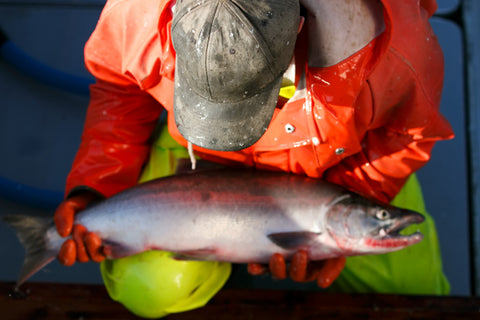
Nutritional Makeup of Farmed Salmon
There is more fat in farmed salmon than wild salmon. More importantly that fat contains less healthy omega-3 fatty acids than the fat in wild salmon. Farmed salmon are intentionally fattened and therefore often accumulate more PCBs (polychlorinated biphenyls), which is one type of persistent organic pollutant. Often, the feed raises the levels of omega-6’s in the farmed salmon, a less healthy fat for consumers.
Persistent organic pollutants, such as the PCBs found in the fat of farmed fish, can directly affect our health. These pollutants have been linked to several diseases, including type 2 diabetes and obesity. More broadly, as a food raised on processed feed, farmed salmon contains higher levels of many other persistent pollutants.
Wild Salmon - A Healthier Option
Wild salmon eat a more natural diet, which makes for fewer PCBs in the fillets and portions we eat as consumers. Anyone who has tried to keep hold of a live seven pound salmon knows that it’s an animal of pure muscle! It is their lifestyle of long-distance swimming, which leaves wild salmon with less fat, and thus fewer calories. The protein content of a portion of farmed salmon is similar to that of a wild fish, but the wild fish is lower in calories while being higher in many vitamins and minerals like potassium, zinc, and calcium.
Understanding Contaminants in Salmon
We know many of our customers at Wild for Salmon are interested in buying quality seafood because they are looking out for their health. We sell exclusively wild salmon because farmed salmon are typically higher in contaminants.
A densely packed fish farm often breeds a lot of germs and disease. So many salmon packed into the small breeding farms causes excrement and uneaten food to accumulate, raising the potential for parasites and disease to spread. Furthermore, studies show that farmed fish generally have more contaminants in the flesh than wild salmon. The fattier tissue of the farmed fish provides more “room” for the contaminants to be included in the flesh.
Although the level of contaminants were stated to be below the U.S. Food and Drug Administration approved levels, they exceeded the levels considered safe “for frequent consumption” by the Environmental Protection Agency. Other research has suggested that children and pregnant women should choose wild salmon for optimal health, due to the contaminant concerns.
Wild salmon is one of the last, truly all-natural food sources on earth. Wild-caught salmon typically do not face the same issues with contaminants. These wild salmon species have very large areas in which to live and swim (whole oceans!), survive off many natural foods and have plenty of space between the fish (which reduces the potential for parasites and disease).
Did You Know This Fact about the Red Color of Salmon?
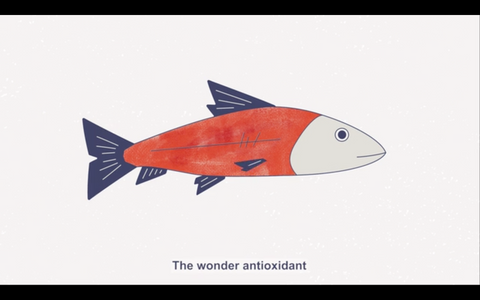
Finally, because the darker hues of red are recognized as a sign of good-quality, many salmon farmers add chemicals to the diet of farmed fish in order to create a product that matches the natural fish. In other words, farmed salmon are often literally dyed pink because their food source does not have the naturally occurring antioxidant astaxanthin, like its wild counterpart’s diet does
Other Concerns About Salmon Farms
Unfortunately, at some salmon farms, the woes and disappointments continue. Some fish farmers give the salmon antibiotics and animal drugs to keep them in good health and increase their size/profitability. There are many concerns about the use of antibiotics in factory farms, and the research is not only about land animals.
Wild salmon have very little to no exposure to these animal drugs. Wild salmon is the safest option for those who are worried about ingesting animal drugs and the other health concerns that come with eating fish that have been raised on antibiotics. Truly a natural and unadulterated protein, wild salmon is a great addition to any diet.
Environmental Impact of Farmed Salmon vs Wild Salmon
We also understand that many of our customers at Wild for Salmon vote with their fork and that an environmentally-conscious mindset influences how they buy seafood. In the case of salmon, we believe that wild-caught salmon is the best choice for the environment.
- Farmed salmon primarily eat fish feed and oil from smaller wild-caught fish, which causes more fish to be removed from the ocean overall and contributes to environmental strain.
- Farmed salmon are Atlantic salmon species, but are often raised in waters that are home to Pacific salmon (such is the case in Washington state). If farmed salmon escape from the farms, they can disrupt the ecosystem by threatening to spread pathogens, such as sea lice, to the naturally healthy wild salmon population.
Meanwhile, wild salmon fit into, and contribute to, their natural ecosystem and do not increase environmental pollution. As participants and stewards of the Bristol Bay salmon run, the greatest and last completely wild source of salmon in the world, we here at Wild for Salmon sustainably catch our fish. We give our customers the healthiest food choices available when it comes to eating salmon, and we hope you’ll join us in enjoying wild-caught salmon!
Wild salmon is waiting for you! Order yours today right here.

 Wild Alaska Salmon
Wild Alaska Salmon Alaska Salmon Burgers
Alaska Salmon Burgers Smoked Salmon & Seafood
Smoked Salmon & Seafood Wild Alaska Whitefish
Wild Alaska Whitefish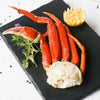 Wild Shellfish & Shrimp
Wild Shellfish & Shrimp Wild Albacore Tuna
Wild Albacore Tuna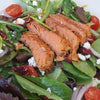 Canned Seafood
Canned Seafood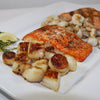 Meal Box & Samplers
Meal Box & Samplers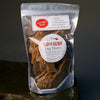 Pet Products
Pet Products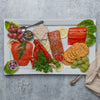 Gifts
Gifts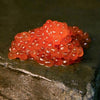 Specialty
Specialty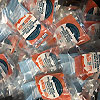 Wholesale Ordering
Wholesale Ordering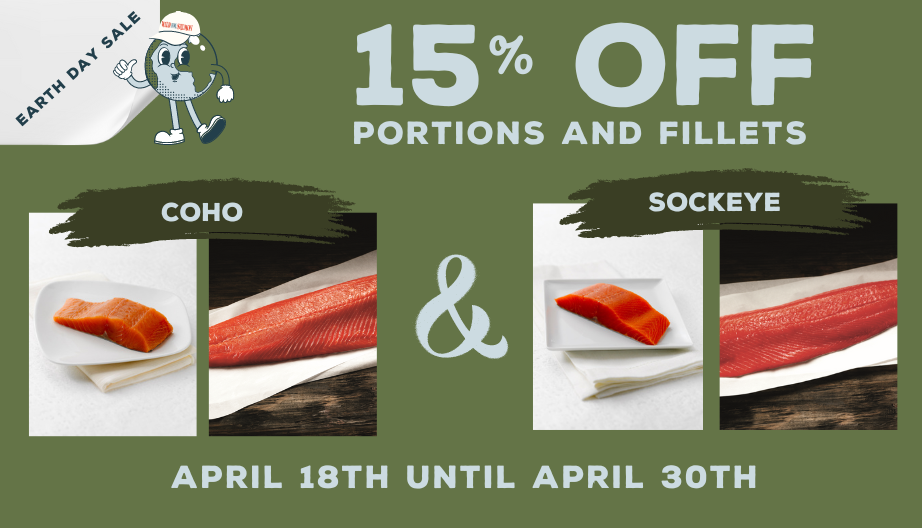

7 comments
Thank you for your interest in our products and for reaching out to us!
All our products are frozen, and we ship to all 48 lower contiguous United States. We use dry ice and most orders arrived within 2, or occasionally, 3 days.
You can check our website for the price of the sockeye portions and sockeye fillets by clicking the links.
Our salmon is processed, frozen, and vacuum-packed within 12 hours of being caught. Captain Steve always says the freshest way to get salmon is to be on the dock when the ship comes in; the next best is our vacuum-packed products! Also, we guarantee all our products for one year from the purchase date.
Please feel free to be in touch should you have any additional questions or concerns!
What are your prices and how is your salmon sold? I live in florida…do people buy your salmon frozen? Is it still nitrient rich when frozen or is it better to show and eat before freezing?
Thank you for reaching out with this question. I love the fact that our customer base is inquisitive and well-informed.
Farmed salmon from Norway seems to be a bit better than other salmon farms. Their fisheries often have a healthier diet, although they are mostly plant-based instead of marine-based. Antibiotics seem to be used less frequently and water space is larger than in other fish farming operations. However, wild-caught seafood is consistently the best quality.
This past season, Bristol Bay experienced a record harvest of Alaskan salmon partially because the Alaska State Department of Fish and Game monitors all commercial, sport, and residential salmon fishing. This means a set number of permits are sold each season based on predictions of the number of salmon expected to return to spawn. As the salmon move towards the bay, researchers actively monitor their movement and count the number of salmon in each school. They then use this data to determine when fishermen are allowed to fish. If the volume of salmon is too low, they are not allowed to fish, but once enough salmon escape up the river to spawn, the fishermen are given a set amount of time they are allowed to fish. This timed fishing allowance and escapement number are vital to the sustainability of salmon. While it isn’t foolproof, this helps ensure a good harvest year after year. A moratorium would upset that balance.